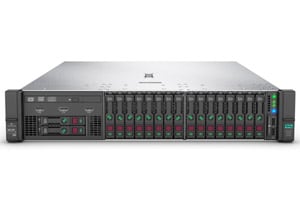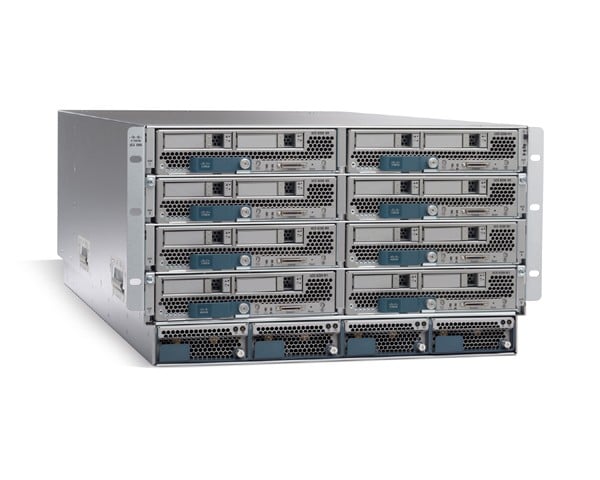Organizations with intense compute needs are often faced with the decision: Rack server or blade server. This post will take a look at key differences between the 2 systems, and advantages of each. Of course, your mileage may vary depending on your application. This post is designed as a wide-angle view of each type of system.
Let’s kick it off with rack servers.

Often called chassis server, here are examples of rack servers: HPE DL380 G10 (pictured above), DL360 G10 is the 1 RU variation. Dell R740 and R640 are great competition to the HPE offering.
Advantages of Rack servers:
- Independence: They function as a stand-alone system. Everything you need is inside the 1 rack unit (RU) or 2 RU chassis.
- Convenience: It is easy to mount and service one rack server, as opposed an entire chassis.
- Cost Savings: They are much cheaper to purchase than blade servers like-for-like
- Hypervisors allow you to cluster your servers and consolidate your management to make it function like a blade system, without the added burden of a blade system.
- Space saving: If your overall requirement is <8 total servers, rack servers are right move.
Blade Servers

Examples of blade servers are: Cisco UCS B200, HPE BL460 Gen 10.
What is a blade server?
Blade servers are contained in a chassis that contains networking connections, fans and power supplies. Each manufacturer makes different sized blade servers. The Cisco 5108 above contains 8 blades. The HPE C7000 contains 16 blades. The blades contain mainly processors memory a couple hard drives. These are not designed as stand-alone units like a rack server, and often require a storage sub-system.
Advantages of Blade Servers:
- Power Consumption: Using fewer, but more powerful power supplies enables these systems to use less power than their rack-mounted counterparts.
- Management software: These systems come with integrated management software, making repairs and servicing very easy if a failure occurs.
- Reliability: Tagging onto the previous bullet these are the preferred server architecture for organizations that require an “always-up” network. They require virtually no downtime.
- Processing power: You can fit more processing power into a smaller RU space. This is important if you are leasing space in a data center and charged by the RU.
- Reduce the need for cables: Since everything is internal, there isn’t a cabling nightmare behind your system.
Conclusion:
A lower compute requirement would be better served by rack servers. Blade servers are more efficient if the requirement calls for lots of compute firepower and low rack space utilization. However, There isn’t a best one-size-fits-all server. Each organization is a different use-case and has different requirements and procedures they follow with their data systems. DYOR, and decide what works best for your organization.
Share
JUN
